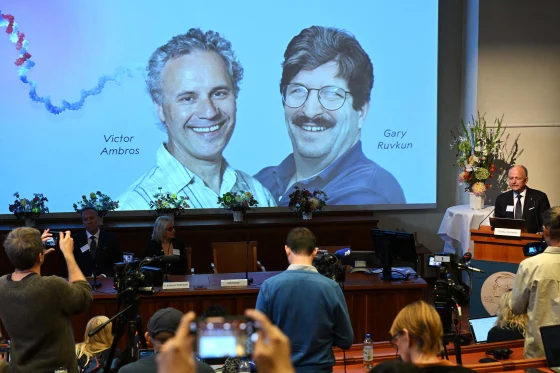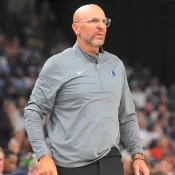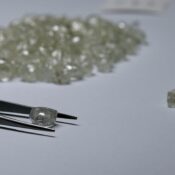
A US team led by Ambros and Ruvkun won the Nobel Prize in science for finding microRNA
American scientists Victor Ambros and Gary Ruvkun won the 2024 Nobel Prize in Medicine on Monday. They found microRNA and figured out how it helps multicellular animals live and grow.
Their work helped us understand how cells specialize and change into different types, like nerve and muscle cells, even though all of a person’s cells have the same genes and directions for how to grow and stay alive.
“The Nobel Prizes, you know, Major League Baseball is known as “The Show.” “That means it’s not just any show; it’s THE show,” Ruvkun told Reuters about what it was like to be famous all over the world.
He made fun of the fact that they had been “joined at the hip for quite a while” because they had worked together and won awards together.
“That was great. “He’s a great guy,” Ruvkun said over the phone. Ambros agreed and said he was glad to share the award with “a great friend.”
In a statement, the Nobel Assembly, which gives the award, said that the winners found a new group of very small RNA molecules that are very important for controlling genes.
“Their groundbreaking discovery revealed a completely new principle of gene regulation that turned out to be essential for multicellular organisms, including humans,” the group said.
In an interview with Reuters, Ambros also talked about microRNA as a “communication network among genes that allows the cells in our bodies to make all sorts of complex structures and functions.”
Ruvkun is a professor at Harvard Medical School and works with Massachusetts General Hospital in Boston. Ambros is a professor at the University of Massachusetts Medical School.
During the late 1980s, Ambros and Ruvkun did postdoctoral work in the lab of Nobel Prize winner Robert Horvitz. They studied a roundworm that was 1 mm long.
At first, their findings about how certain microRNAs in roundworms control the growth of organs and tissue were thought to be unique to that species.
But in 2000, more study from Ruvkun’s group showed that all animal life had relied on the mechanism for more than 500 million years.
Putting up blocks for life
Single-strand messenger RNA, which was the subject of last year’s Nobel Prize in science, is decoded and translated into proteins, which are the building blocks of all living things. This is where microRNA comes in.
Messenger RNA, or mRNA, comes from DNA, which is found in every cell nucleus and serves as a guide.
Professor Gunilla Karlsson Hedestam of the Karolinska Institute said that this year’s prize was for a big step forward in basic thinking that could have many uses in the future. The 2023 prize was for specific use in COVID-19 vaccines.
Assistant Professor in Biomedical Sciences at Dublin City University Janosch Heller said that the results had helped people learn more about diseases like epilepsy. He did not help choose the winners.
The Nobel Prize in physiology or medicine is given by the Nobel Assembly of Sweden’s Karolinska Institute medical university. The winner gets 11 million Swedish crowns, which is about $1.1 million.
The physiology or medicine prize was given out first, as it is every year. The other five prizes will be announced over the next few days. The Nobels are thought to be the most prestigious awards in science, writing, and humanitarian work.
Alfred Nobel, a Swedish businessman and inventor of dynamite, set up the prizes in his will. Since 1901, they have been given for breakthroughs in science, writing, and peace, with economics added later.
Many great researchers have won the Nobel Prize in medicine in the past, such as Ivan Pavlov in 1904, who is best known for his work with dogs to study behavior, and Alexander Fleming, who shared the prize in 1945 for discovering penicillin.
It was clear that Katalin Kariko, a Hungarian scientist, and her U.S. partner Drew Weissman should win this year’s medicine prize. Their work led to the development of COVID-19 vaccines that helped stop the pandemic.
The winners of the science, literature, and economics prizes are traditionally honored in a ceremony on December 10, which is the date of Alfred Nobel’s death. There is then a fancy banquet at Stockholm city hall. On the same day, different events are held in Oslo for the winner of the Peace Prize. One dollar is equal to 10.1086 Swedish crowns.
All Categories
Recent Posts
Tags
+13162306000
zoneyetu@yahoo.com



